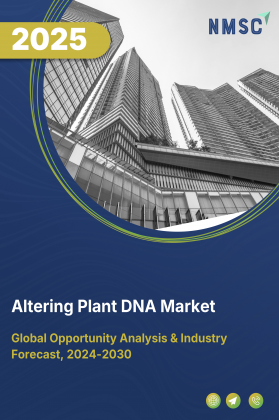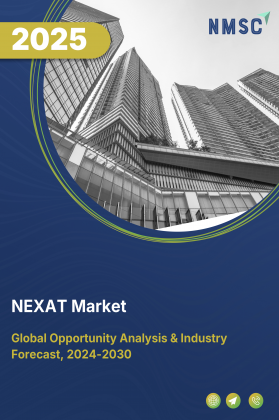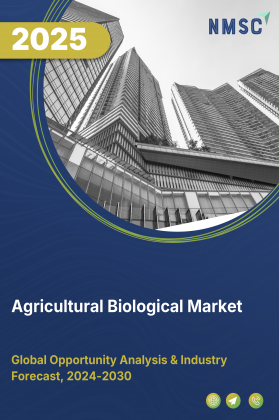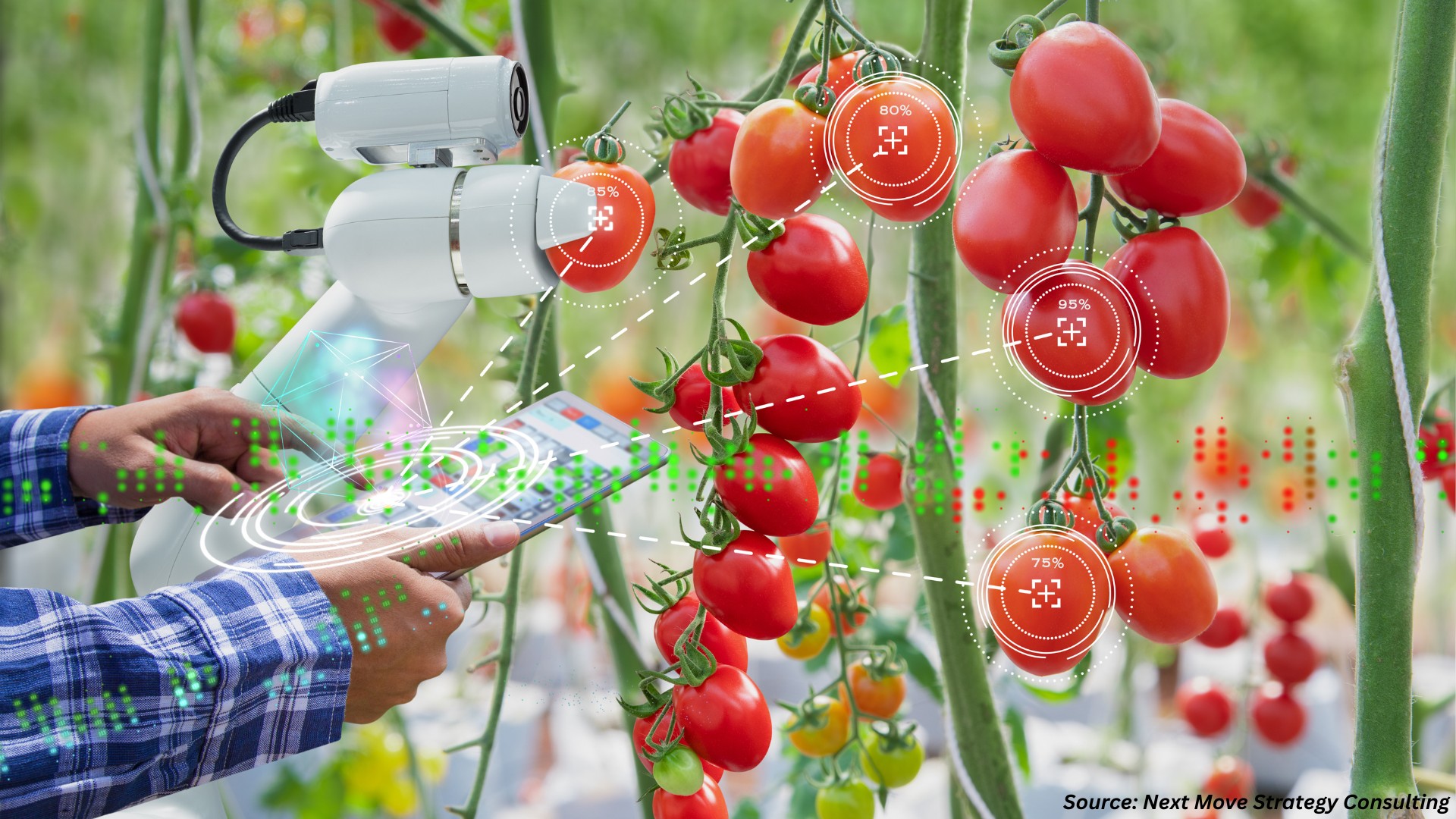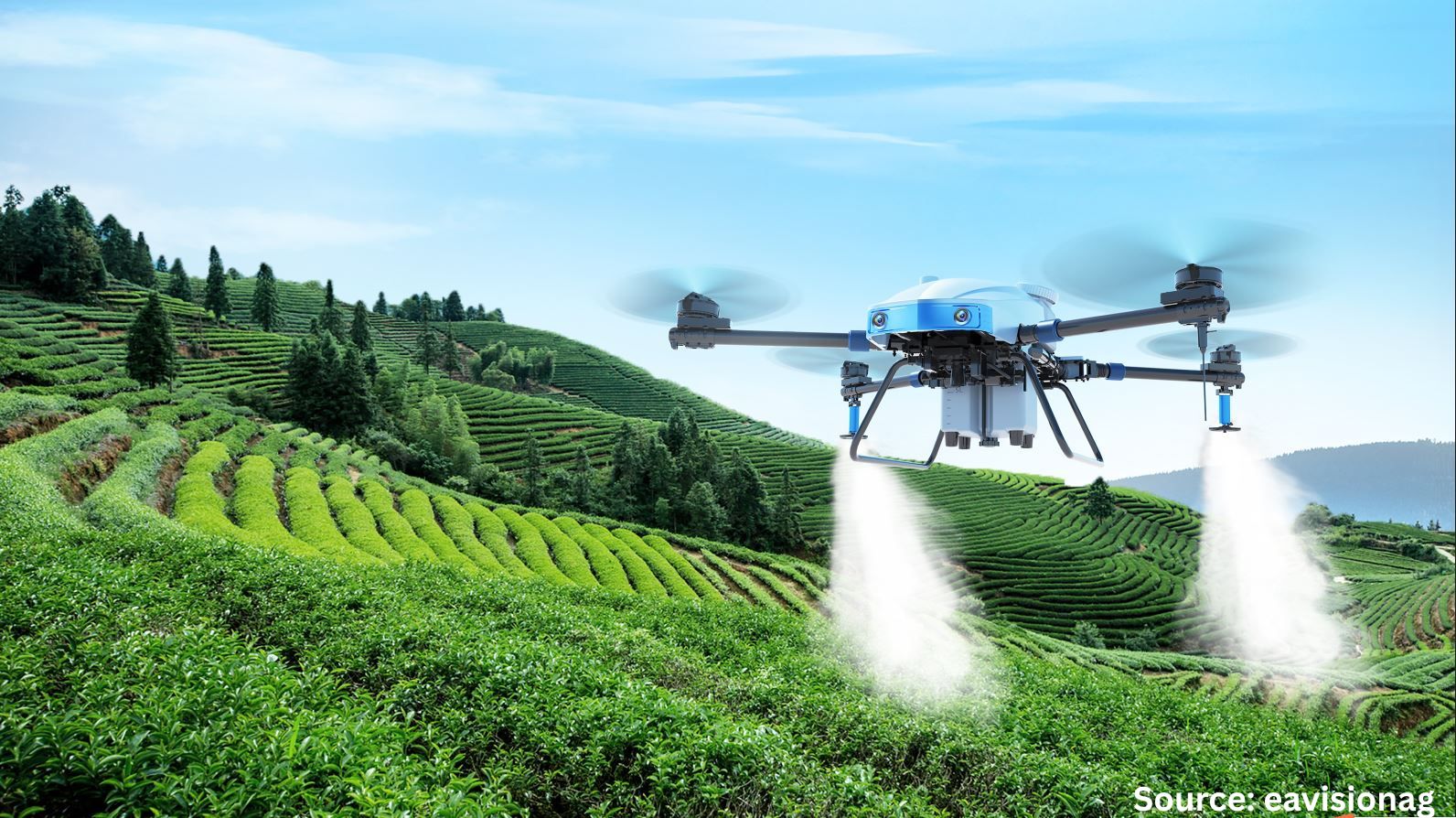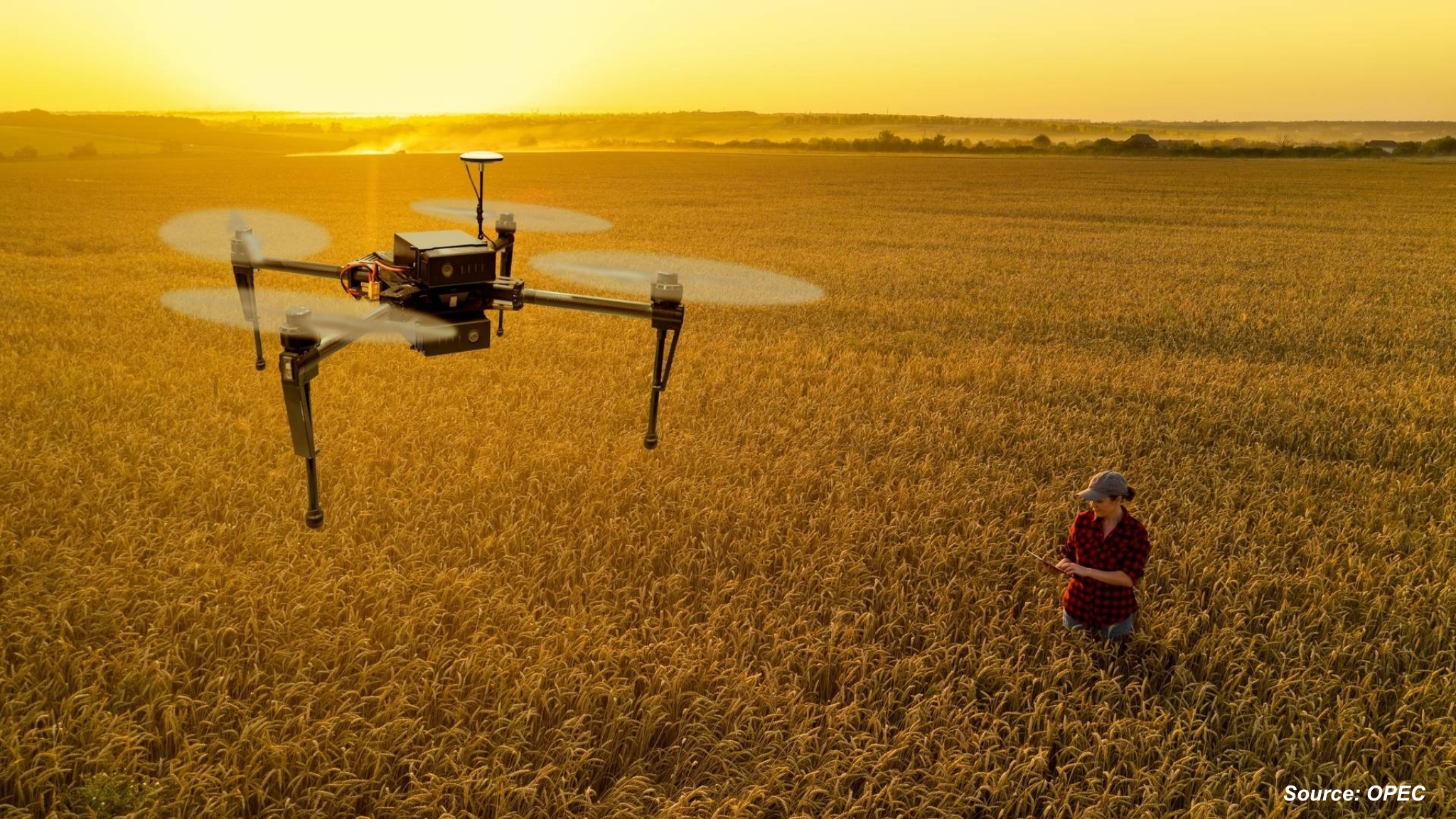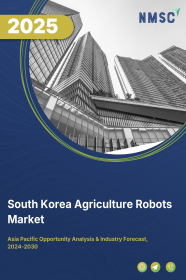
South Korea Agriculture Robots Market by Type (Driverless Tractors, Unmanned Aerial Vehicles (UAVs), Milking Robots, Automated Harvest Robots, and Others), Offering (Hardware, Software, and Services), Farming Type (Indoor Farming and Outdoor Farming), Application (Dairy Management, Irrigation Management, Harvest Management, Soil Management, Inventory Management, and Others), and Others – Opportunity Analysis and Industry Forecast 2023–2030
Industry: Agriculture | Publish Date: 14-Feb-2025 | No of Pages: 89 | No. of Tables: 73 | No. of Figures: 31 | Format: PDF | Report Code : AG635
South Korea Agriculture Robots Market Report - Comprehensive Overview | |
| Study Period | 2020 - 2030 |
| Base Year for Estimation | 2024 |
| Forecast Data Period | 2026 - 2030 |
| Market Size in Base Year | 152.81 |
| Market Size in Forecast Year | 290.32 |
| Growth Rate 2026 - 2030 | 13.7% |
| Growth Factors | |
| Report Coverage | The report provides insights on market size, forecasts, emerging trends, competitive landscape, key segments, growth opportunities, recent developments, and strategic recommendations to help stakeholders make informed business decisions. |
| Segments Covered | South Korea Agriculture Robots Market by Type (Driverless Tractors, Unmanned Aerial Vehicles (UAVs), Milking Robots, Automated Harvest Robots, and Others), Offering (Hardware, Software, and Services), Farming Type (Indoor Farming and Outdoor Farming), Application (Dairy Management, Irrigation Management, Harvest Management, Soil Management, Inventory Management, and Others), and Others |
| Countries Covered | 12 |
| Geographical Analysis | China, Japan, India, South Korea, Australia, Indonesia, Singapore, Taiwan, Thailand and Rest of Asia-Pacific |
| Companies Profiled | Top 10 companies |
| Competitive Landscape | |
| Market Share | Available for top 10 companies |
| Customization Scope | Free customization (equivalent to up to 80 working hours of analysts) after purchase. Addition or alteration to country, regional, and segment scope. |
| Purchase Option | Avail customized purchase options to meet your exact research needs. |
Market Definition
South Korea Agriculture Robots Market was valued at USD 70.31 million in 2022, and is predicted to reach USD 290.32 million by 2030, with a CAGR of 18.2% from 2023 to 2030. Agricultural robots are machines that use advanced technology to perform tasks in farming, such as planting, harvesting, monitoring, and spraying crops. They are designed to improve efficiency, production, and precision in agriculture, while reducing the need for manual labor and improving the working conditions of farmers.
Agribots are sophisticated robots that use sensors, actuators, and algorithms to sense their surroundings, make decisions, and perform tasks. They use GPS or mapping technology to navigate through fields and perform a variety of agricultural activities, such as planting seeds, harvesting crops, applying pesticides or fertilizers, and monitoring crop health. They use computer vision technology to identify crops and weeds, detect pests and diseases, and take precise actions based on the information they gather
Transforming South Korea's Agriculture through Smart Technology and Automation
South Korea's agricultural industry has undergone considerable development from traditional agriculture to smart agriculture. The gross domestic product (GDP) from the agriculture, forestry, and fishery kept a steady level throughout the years and accounted for roughly 1.75% of the total GDP. The growth of automation technology in agriculture is driven by the increasing demand for food, due to the growing population and changing consumer preferences. This has put pressure on the agriculture industry to increase productivity and efficiency. For example, in August 2021, South Korea has localized a milking machine that uses a robot arm to autonomously extract milk, thus reducing burden off old dairy farmers. Thus, it is expected to create significant growth of the market within the country.
Promoting Sustainable Farming Practices with Agriculture Robots in South Korea
South Korea's focus on sustainability aligns with the potential of agriculture robots to support eco-friendly farming practices. By reducing the use of agrochemicals, optimizing resource consumption, and implementing precision agriculture techniques, robots contribute to sustainable farming systems. Agriculture robots can help South Korean farmers meet the increasing demand for environmentally friendly and ethically produced agricultural products, which is expected to create significant growth of the agriculture market in the future.
Financial Barriers Hindering Widespread Adoption of Agricultural Robots in South Korea
The large initial expenditure necessary to buy, integrate, and maintain sophisticated robotic systems is a key obstacle to agricultural robot adoption in South Korea. This is particularly true for small-scale farmers and those with limited financial means. The initial costs of procuring the required technology and equipment, as well as training workers to operate and maintain the robots, provide a considerable financial hurdle. As a result, the broad deployment of agricultural robots is hampered, which is expected to restrain the growth of the market.
Agriculture in South Korea leveraging Advanced Robotics Technology
The advancements in technology have made it possible to develop agriculture robots that are more sophisticated, precise, and cost-effective. These robots are equipped with sensors, cameras, and other advanced technologies that help farmers in monitoring their crops and soil health, optimizing irrigation, and reducing the use of pesticides, which is expected to create ample opportunities for the agriculture market in the future.
Competitive Landscape
The Agriculture Robots industry includes several market players such as Doosan Robotics, LG CNS, Samsung Techwin, Shinhan Robot, Woojin Robot, Yokogawa Electric, ZMP, Aerofarms, Kigo, and FarmWise.
KEY BENEFITS
-
The South Korea agriculture robots market report provides a quantitative analysis of the current market and estimations through 2023-2030 that assists in identifying the prevailing market opportunities to capitalize on.
-
The study comprises a deep dive analysis of the market trend including the current and future trends for depicting the prevalent investment pockets in the market.
-
The information related to key drivers, restraints, and opportunities and their impact on the market is provided in the report.
-
The competitive analysis of the market players along with their market share in the South Korea agriculture robots market.
-
The SWOT analysis and Porter’s Five Forces model are elaborated in the study.
-
Value chain analysis in the market study provides a clear picture of the stakeholders’ roles.
SOUTH KOREA AGRICULTURE ROBOTS MARKET KEY SEGMENTS
By Component
-
Driverless Tractors
-
Unmanned Aerial Vehicles (UAVs)
-
Milking Robots
-
Automated Harvest Robots
-
Others
By Offering
-
Hardware
-
Software
-
Services
By Farming Type
-
Indoor Farming
-
Outdoor Farming
By Application
-
Dairy Management
-
Irrigation Management
-
Harvest Management
-
Soil Management
-
Inventory Management
-
Others
By End User
-
Field Crops
-
Fruits & Vegetables
-
Livestock
-
Others
Key Players
-
GEA Group
-
CNH Industrial
-
Delaval
-
Deere & Company
-
AGCO Corporation
-
Trimble Inc.
-
Naio Technologies
-
Yanmar Holdings Co. Ltd.
-
SZ DJI Technology Co. Ltd.
-
Boumatic
-
Harvest Automation Inc
-
Autonomous Solution Inc
-
Clearpath Robotics
-
Ageagle Aerial System
-
Kubota Corporation




















 Speak to Our Analyst
Speak to Our Analyst



